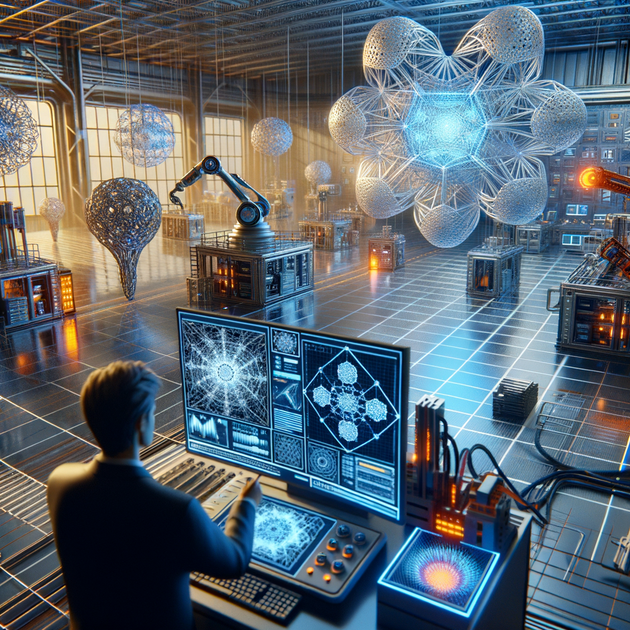Breaking Boundaries: How Machine Learning Revolutionizes Lattice Structure Design
Lattice structures, with their intricate patterns and unique hierarchical designs, offer a world of possibilities in industries like automotive, aerospace, and biomedical engineering. These structures are lauded for their high strength-to-weight ratio, customizability, and remarkable versatility, enabling the creation of lightweight yet durable components that can be precisely tailored to meet specific functional needs.
The Challenge of Complexity in Lattice Structures
Despite the immense potential, the complexity inherent in lattice structures poses a massive challenge. Traditional design methods struggle to navigate the vast design space. With each added design variable, the potential configurations multiply exponentially, rendering the design space nearly intractable. Engineers have long grappled with the task of identifying the optimal configuration from millions of possibilities.
LLNL’s Revolutionary Approach
Engineers at Lawrence Livermore National Laboratory (LLNL) set out to tackle this challenge by harnessing the power of machine learning (ML) and artificial intelligence (AI). Armed with advanced computational tools, LLNL researchers have significantly enhanced the optimization process for lattice structure designs.
Case Study: In a groundbreaking study published by Scientific Reports, LLNL researchers employed a combination of ML algorithms and traditional methods to optimize design variables, predict mechanical performance, and accelerate the design workflow. This integrated approach has streamlined the process, allowing for the exploration of millions of potential configurations with unprecedented efficiency.
Leveraging AI for Optimal Design
“By leveraging machine learning-based approaches in the design workflow, we can unlock the full potential of lattice structures and capitalize on their diverse mechanical properties,” explained Aldair Gongora, lead author and LLNL engineer.
This ML-driven approach marks a significant advancement in design, demonstrating the critical role AI can play in accelerating and refining design processes. By incorporating iterative ML techniques, researchers can now effectively navigate the design space and uncover optimal configurations that were previously unreachable.
Machine Learning to the Rescue: The Two Main Challenges
LLNL researchers focused on overcoming two primary challenges in lattice structure design:
- Developing a model to understand the impact of various design choices on the lattice’s mechanical performance.
- Creating a method to efficiently identify the most effective designs.
Surrogate Models: The Digital Prototypes
At the core of this research are the ML-driven surrogate models, which act as digital prototypes to investigate the mechanical properties of lattice structures. These models were trained on an extensive dataset encompassing various design variables. The accuracy of surrogate models exceeded 95%, offering valuable insights into design parameters and their impact on mechanical performance. This remarkable accuracy allowed researchers to optimize designs by exploring just 1% of the design space.
Using Bayesian optimization and Shapley additive explanation (SHAP) analysis, LLNL researchers efficiently explored design options, reducing computational load and the number of simulations needed to identify optimal designs. Their custom active-learning approach required 82% fewer simulations compared to traditional grid-based search methods.
A New Benchmark for Intelligent Design Systems
This research has established a new benchmark for intelligent design systems utilizing ML algorithms and computational modeling. It underscores AI’s pivotal role in advancing the design of lattice structures for various applications.
Looking ahead, Gongora is optimistic that their innovative approach will extend beyond lattice structures. He envisions applying this methodology to other design challenges that heavily rely on costly simulations.
Broad Implications for Machine Learning in Engineering
LLNL’s work exemplifies the transformative potential of machine learning in engineering. From AI in healthcare to self-driving car technology, the applications of ML are vast and varied, offering solutions that were once deemed impossible.

Final Thoughts: The Future of AI and Design
As we continue to push the boundaries of what’s possible, the integration of AI and machine learning in design processes will undoubtedly lead to more efficient, innovative, and cost-effective solutions across industries.
What are your thoughts on how machine learning can revolutionize other fields? Share your insights in the comments below!
Related articles you might find interesting:
